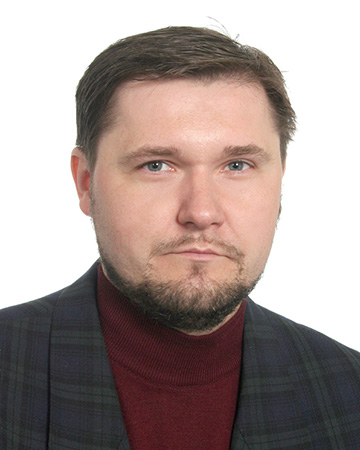|
 UDC [332.122:911.375]:338.244.47(477.83); JEL R58
UDC [332.122:911.375]:338.244.47(477.83); JEL R58
Borshchevskyy, V. V. (2021). Strukturna polityka velykykh mist na suchasnomu etapi detsentralizatsiyi (na prykladi L'vivs'koyi OTH) [Structural policy of large cities at the present stage of decentralization (on the example of Lvivska consolidated territorial community)]. Rehional'na ekonomika - Regional Economy, 99 (1), 5-14. DOI: https://doi.org/10.36818/1562-0905-2021-1-1. [in Ukrainian].
Sources: 14
Authors
Borshchevskyy Viktor ValentynovychDoctor of Economics, Associate Professor
Leading Researcher of the Department of spatial development of the Dolishniy Institute of Regional Research of NAS of Ukraine; Head of the Department of public administration of the Ukrainian Catholic University
Contacts:  borshchevsky@ukr.net borshchevsky@ukr.net
Webpages:            
ResumeThe present stage of decentralization in Ukraine is characterized by the activation of the processes of harmonization of economic development priorities in many newly established consolidated territorial communities (CTCs). In the first place, it is about the CTCs that were established around large cities after last year’s local elections. Traditionally, rural areas are rather skeptical about the possibility of complete realization of their interests within such CTCs. It causes numerous conflict situations. A range of CTCs established in the previous years even refuse to join new municipal CTCs. Often the refusal contradicts economic logic but meets the social support of the local population. For example, Lvivska CTC didn’t manage to consolidate a range of adjoining areas around it due to the unfriendly disposition of management of surrounding CTCs and their residents. Consequently, its spatial location turns out to be rather asymmetrical. The city’s boundaries literally “encounter” the neighboring village CTCs on the South and East. Moreover, some part of municipal infrastructural facilities turned out to be at their territory (supermarkets, trade centers, traffic intersections, and communal infrastructure facilities). To overcome the described problems and prevent conflict situations, it is reasonable to change approaches to the implementation of economic policy on the local level in the future. In the first place, modern approaches to the implementation of large cities’ structural policy should be introduced at the present decentralization stage. Because currently manufacturing prevails in the structure of these cities’ economy in Ukraine. Moreover, the foundations of industrial capacity of the municipal economy were formed back in the Soviet period. In the first place, it is about industrial regions of Eastern and Southern Ukraine. Yet, even in the West, namely in Lviv, most currently operating industrial enterprises were founded in the 1960s (some of them even in the 1940s). It is hardly real to transfer the production capacities of such enterprises to the neighboring rural areas. So, increasing the capacity of innovative production in adjoining rural areas should be the major priority of large cities’ structural policy at the present stage of decentralization.
Keywords:structural policy, large cities, decentralization, consolidated territorial communities, spatial development
References- Tkachuk, A., Serhiyenko, O., Layko, O., & Natalenko, N. (2019). Yak rozpochaty druzhbu mizh mistom ta selom? Pro spivrobitnytstvo mis’kykh ta sil’s’kykh terytorial’nykh hromad: metodychni rekomendatsiyi [How to start a friendship between town and country? About cooperation of urban and rural territorial communities]: Methodical recommendations. Kyiv: Institute of Civil Society. [in Ukrainian].
- Bolshynskaya I. (2012). O problemakh bol’shikh i malykh gorodov [About the problems of cities and towns]. Problemy ekonomiky – Problems of the economy, 4, 68-73. [in Russian].
- Storonyanska, I. Z, & Patytska, Kh. O. (2019). Administratyvno-finansova detsentralizatsiya: tsili reformy ta rezul’taty pershoho etapu [Administrative and financial decentralization: goals of the reform and results of the first stage]. Rehional’na ekonomika – Regional economy, 1, 3-13. [in Ukrainian].
- Koster H. (2013). The Internal Structure of Cities: The Economics of Agglomeration, Amenities and Accessibility. Amsterdam: Vrije Universiteit Amsterdam.
- Czarnecki A. (2018). Urbanizacja kraju i jej etapy [Urbanization of the country and its stages]. IRWIR PAN: Website. Retrieved from http://www.irwirpan.waw.pl/dir_upload/site/files/Monografia/02_Czarnecki.pdf [in Polish].
- Wers, R. (2016). Zróżnicowanie poziomu urbanizacji w Polsce [Differentiation of the level of urbanization in Poland]. Epodreczniki.pl: Website. Retrieved from https://epodreczniki.pl/a/zroznicowanie-poziomu-urbanizacji-w-polsce/D19MUchJD [in Polish].
- Gawron, H. (2014). Rozwój aglomeracji miejskich i ich znaczenie dla rozwoju lokalnego rynku nieruchomości [Development of urban agglomerations and their importance for the development of the local real estate market]. Zarządzanie i Finanse – Journal of Management and Finance, 12(4), 135-151. [in Polish].
- Chy pryiednayutsya Sokil’nyky do L’vova: vidverta dyskusiya pro ahlomeratsiyu ta OTH [Will Sokilnyky join to Lviv: an open discussion about the agglomeration and UTC] (2020). Your city: Website. Retrieved from http://tvoemisto.tv/exclusive/aglomeratsiya_chy_otg_yak_dali_rozvyvatysya_lvovu_i_navkolyshnim_naselenym_punktam_103823.html [in Ukrainian].
- «Ne pasuye rozluchatys’ pislya 2 rokiv zhyttya» – holova Murovanskoyi OTH pro pryyednannya do L’vova [«It is not appropriate to divorce after 2 years of life» – the head of Murovanska UTC on joining Lviv] (2020). Pepper: Website. Retrieved from https://perets.media/2020/02/26/ne-pasuye-rozluchatys-pislya-2-rokiv-zhyttya-golova-murovanskoyi-otg-pro-pryyednannya-do-lvova [in Ukrainian].
- Shutka, N. (2020). Sud vidmovyv Malekhivs’kiy sil’radi u sprobi vid»yednatysya vid L’vivs’koyi OTH [The court denied Malekhiv Village Council an attempt to secede from Lviv UTC]. Zaxid.net: Website. Retrieved from https://zaxid.net/sud_vidmoviv_malehivskiy_silradi_u_sprobi_vidyednatisya_vid_lvivskoyi_otg_n1510625 [in Ukrainian].
- Buchko, A. (2020, Feb 12). Pryyednannya Zashkova do L’vova: vlada – za, hromada – proty [Zashkiv’s accession to Lviv: the government – for, the community – against] (2020). Galinfo: Website. Retrieved from https://galinfo.com.ua/articles/pryiednannya_zashkova_do_lvova_vlada__za_gromada__proty_337283.html [in Ukrainian].
- Lishchenko, Yu. (2020, Jan 16). Misto Leva khoche staty «Velykym L’vovom» [The city of Lev wants to become the «Great Lviv»]. High Castle: Website. Retrieved from https://wz.lviv.ua/article/404510-misto-leva-khoche-staty-velykym-lvovom-mapa [in Ukrainian].
- Ekonomichnyy efekt vid IT-industriyi L’vova perevyshchyv mil’yard dolariv [The economic effect of Lviv’s IT industry has exceeded one billion dollars] (2019, Dec 12). Lviv IT cluster: Website. Retrieved from https://itcluster.lviv.ua/ekonomichnyj-efekt-vid-industriyi-lvova-perevyshhyv-milyard-dolariv [in Ukrainian].
- Pivnichnyy obkhid L’vova razom iz avtobanom Krakovets’-Rivne utvoryat’ suchasnyy transportnyy korydor iz Yevrosoyuzom, – Shmyhal [The northern bypass of Lviv together with the Krakovets-Rivne highway form a modern transport corridor with the European Union, – Shmygal] (2021, Mar 15). The fourth studio: Website. Retrieved from https://4studio.com.ua/novyny/pivnichnyj-obhid-lvova-razom-iz-avtobanom-krakovets-rivne-utvoryat-suchasnyj-transportnyj-korydor-iz-yevrosoyuzom-shmygal [in Ukrainian].
|